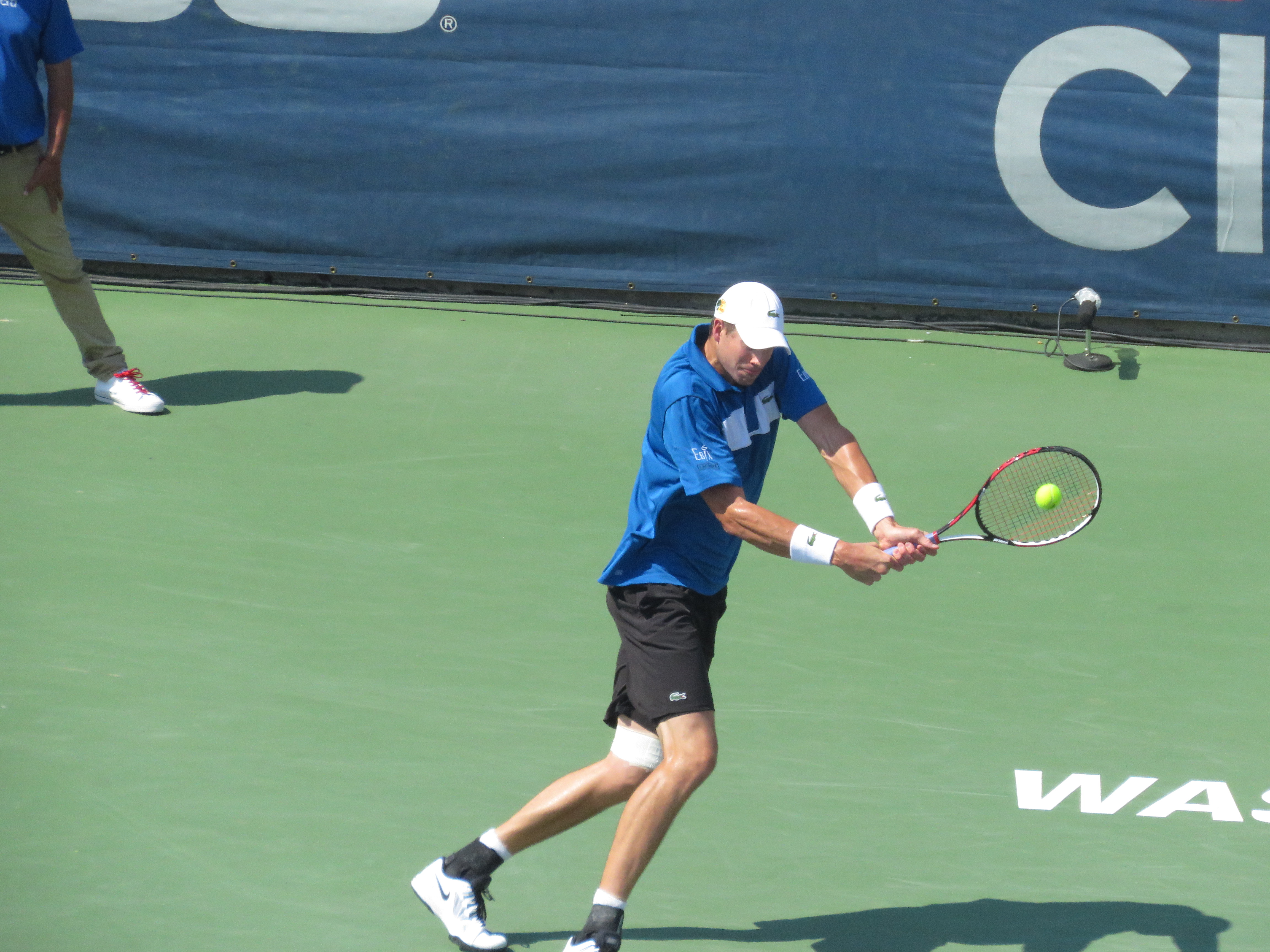
Photo by Mehrban Iranshad
Controlled aggression is the most effective way to win a tennis match.
There are three main ways that tennis players attempt to defeat their opponents.
- Wait for opponent's error
- Go for winners
- Controlled aggression
What is Controlled Aggression?
Controlled aggression means taking control of points by playing high-percentage tennis.
This style of tennis differentiates itself from waiting for an opponent's errors (aka "pushers") because the player dictates points as opposed to playing reactive tennis.
Controlled aggression is also different from going for winners because the player plays higher-percentage tennis and uses optimal shot selection.
What Are the Benefits?
There are several benefits to playing with controlled aggression.
Tire out your opponent
If you play a pusher-style of tennis, you do all the running. And if you keep trying to hit winners, your opponent won't be tired because the points will be short. But if you play high-percentage tennis and dictate the point, your opponent will be on the defense and have to scramble all over the court. This requires a high-level of fitness that will eventually leave your opponent out of breath and exhausted.
Force your opponent to come up with difficult shots
Using controlled aggression puts your opponent in uncomfortable situations. If you can execute this method, your opponent will have to hit multiple shots on the run and in tough positions. Conversely, you will receive weaker replies which means hitting easier shots. By sing controlled aggression, you will break down everyone except the most elite players who can produce quality shots from sub-optimal positions on the court.
Less errors because of high-percentage play
Controlled aggression is optimal because the player uses intelligent and high-percentage shot selection. For example, instead of going for winners when out of position, the player will utilize deep crosscourt groundstrokes to re-establish neutrality and eventually take control of the point. By dictating play with smart shot selection, the player will break down the opponent.
Confidence
Here is a simple question: Does it feel better to make your opponent run around the court, or have the opponent run you around like a rag doll? When you take control of a point, it shows your ability to play better than your opponent and is important for your confidence. It is much more enjoyable to win a match by taking control of points with high-percentage play. Proactive is better than reactive.
How Do I Play With Controlled Aggression?
The key to controlled-aggression is having a weapon. You need to develop at least one stroke that can consistently hurt your opponent. You need the ability to vary the direction, speed, depth, and spin of this stroke to increase your effectiveness when playing with controlled aggression.
Next, you need to take control of points with your weapons, whether it be a big serve, deep forehand, heavy groundstroke, or sharp-angled volley.
You must dictate the points against your opponent, but with smart and high-percentage shot selection, rather than pure power alone. Find your opponents' weaknesses, take control of the point with heavy deep balls or sharp angles, and you will rack up the victories.
Finally, you must have the ability to finish points. Most of the time, if you play with controlled aggression, you will be faced with a short ball or weak reply. In these instances, you must be able to hit effective approach shots or a ball that your opponent cannot reach.
You will also need solid volleys. This means you need a consistent volley that you can place in the open court (or behind your opponent, whichever is more effective). There is nothing more frustrating than to set up a point with stellar groundstrokes and dumping an easy volley into net. Work on your volleys.
Proof that Controlled Aggression Works
If you watch the majority of professional matches, you will notice that players rarely win matches by waiting for their opponents' mistakes. Rather, you will see one player force the other to run from corner to corner and hit difficult shots to keep the point from ending. Listen to players talk: they will commonly say "I was trying to stay aggressive" when analyzing a victory. Kei Nishikori said it was the key to his victory against John Isner in the 2015 Citi Open final.
But you also see controlled aggression work at the amateur level. You may get away with waiting for your opponents' errors in the lower NTRP ratings, but once you get to the 4.5-5.0 level, the best players routinely take control of points and force their opponents into errors from having to hit difficult shots.
The most successful players have complete games that force their opponents into difficult shot-making situations. And they don't do this by going for broke or waiting for mistakes. They take control of the point.
I encourage you to develop a consistent weapon in your tennis game. You will win more matches by dictating points with controlled aggression. And you might be a little less sore afterwards too.
If you like this article, SUBSCRIBE to my free newsletter to receive more tips like this one straight to your email. And let me know what you think about this article by leaving a COMMENT below. Thanks!

